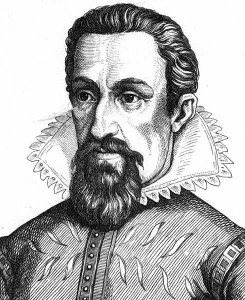
Johannes Kepler, a German mathematician and astronomer in the 1600s, was one of the key players of his time in astronomy. Among his best discoveries was the development of three laws of planetary orbits. He worked for Tycho Brahe, who had logged huge volumes of astronomical data, which was later passed onto to Kepler. Kepler took this information to design and develop his ideas about the movements of the planets around the Sun.
Kepler’s 1st Law states that planetary orbits about the Sun are not circles, but rather ellipses. The Sun lies at one of the foci of the ellipse.
Well, almost.
Newton’s Laws of Motion state that the Sun can’t be stationary, because the Sun is pulling on the planet just as hard as the planet is pulling on the Sun. They are yanking on each other. The planet will move more due to this pulling because it is less massive. The real trick to understanding this law is that both objects orbit around a common point that is the center of mass for both objects. If you’ve ever swung a heavy bag of oranges around in a circle, you know that you have to lean back a bit to balance yourself as you swing around and around. It’s the same principle, just on a smaller scale.
Please login or register to read the rest of this content.
